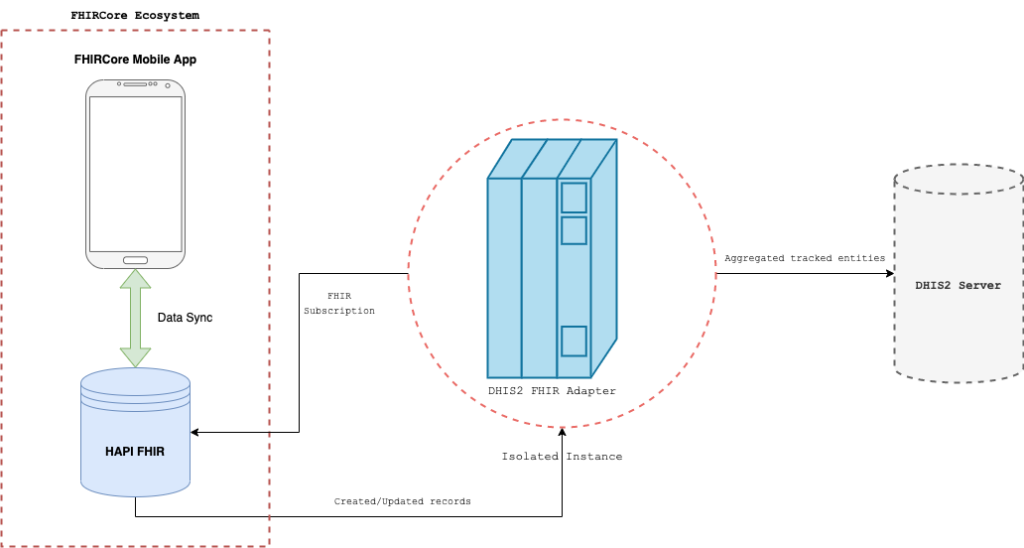Powering interoperability with a FHIR to DHIS2 adapter
The HL7 FHIR standard is emerging as an integral solution to the much discussed interoperability challenges in global health. However, there are many operational platforms that use proprietary formats and there is a large quantity of data “locked” in those proprietary formats. As new projects go live at scale we are building tools to 1) unlock that data and 2) make sure standards based data can be used within the proprietary platforms that Ministries of Health (MOH) and other organizations are already actively using. Towards this goal we have built upon existing work by the University of Oslo and ITINordic, to create a FHIR health data store to DHIS2 integration.

A FHIR to DHIS2 integration has increased in priority as FHIR has become more widely used for data collection. This is thanks in part to progress made by Google and technical partners like Ona who are helping to create the Android FHIR SDK. Technical partners have begun building digital health platforms on top of the SDK to support the WHO SMART Guidelines, and implementing organizations are now deploying projects using these platforms. Ona has worked towards this through our Quest and FHIR Core products.
The journey to transform existing data into FHIR standards and collect new data in FHIR standards does not stop at the data collection and transformation step. To lay the foundation for improved clinical decisions and automated AI driven insights, the generated data must be consumed across multiple health systems. Because DHIS2 is an aggregation, reporting and analytics HMIS that is widely used by healthcare providers and MoHs, it is critical that FHIR data platforms are able to interoperate with it.
Using an updated FHIR to DHIS2 adapter, we enable data flow from a FHIR compliant server (using the HAPI FHIR server as an example) to a DHIS2 Aggregate Server by rebuilding and extending the deprecated DHIS2 FHIR Adapter originally created by the University of Oslo and ITINordic. This adapter works by storing FHIR subscription notifications from one or more FHIR servers that instruct the FHIR server to send notification messages when specific resources are created or updated. These messages are then queued for processing based on preset rules and transformation configurations stored within the adapter. After processing the transformed messages are pushed to the DHIS2 server.
The adapter can be configured to map from FHIR resources to tracked entities within the target DHIS2 server. Going in the other direction, the DHIS2 to FHIR bundle supports the conversion of DHIS2 resources, e.g. organization units, into FHIR bundles that can then be uploaded into a FHIR compliant server. This ensures equivalence between your FHIR and DHIS2 data structures to aid in tasks where data is aggregated up to the organization unit.
With DHIS2 as one of the critical reporting tools used to store aggregated data, and FHIR as the interoperability standard for patient health data, a tool that supports the seamless integration between DHIS2 and FHIR is another piece in the puzzle of standards based healthcare platforms. Ona is looking forward to continuing working with our partners in integrating FHIR with DHIS2, and is excited to further collaborate with others on the FHIR to DHIS2 adaptor. We see supporting integrations like this key to our vision of achieving the modern digital health stack.

